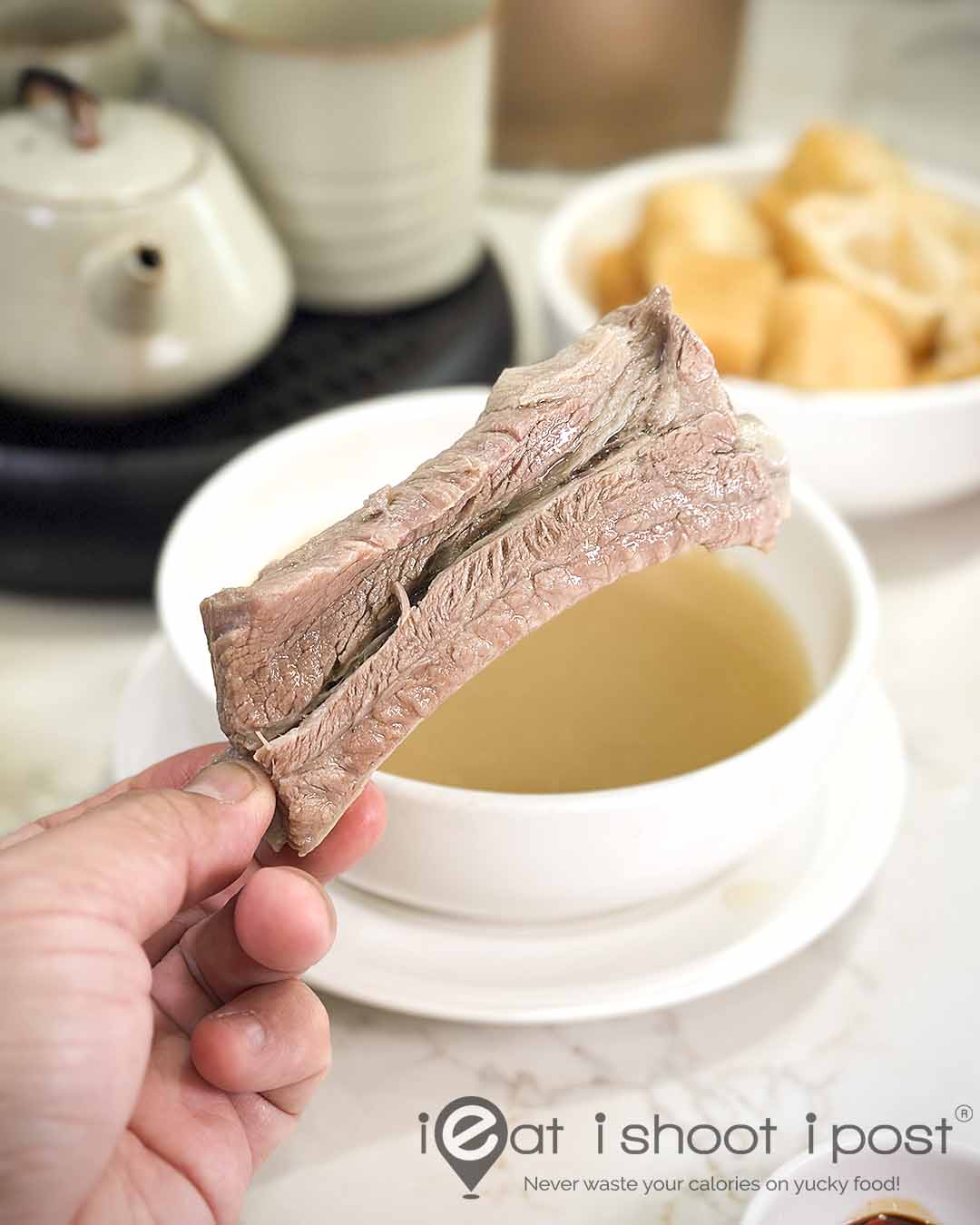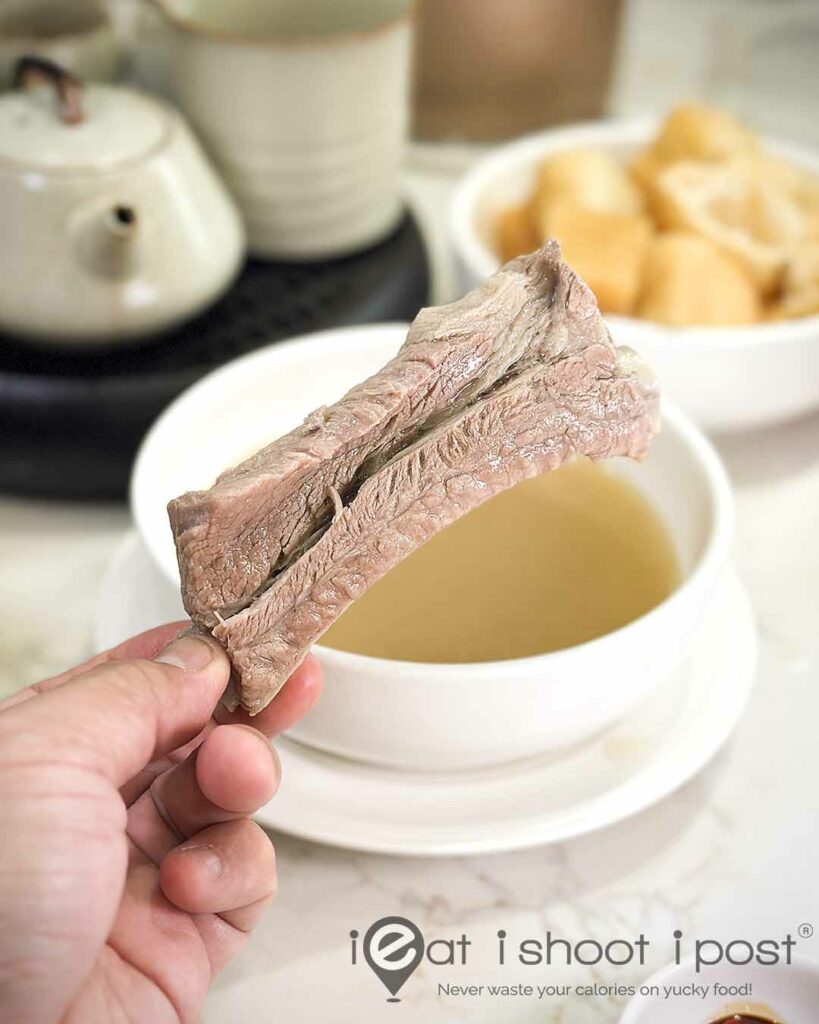
When it comes to Bak Kut Teh, Song Fa has undoubtedly been one of the most successful in terms of expansion. I first met Yeo Hart Pong when he had just opened their flagship restaurant on New Bridge Road, which quickly attracted long queues.
Twelve years on, Hart Pong has taken the humble street-side push cart stall started by his father, Mr Yeo Eng Song, in 1969 and grew it into a successful restaurant chain with a strong brand presence. Song Fa’s growth is a testament to Hart Pong’s skill in standardizing operations.
Expect Teochew Flavours and Hospitality
Song Fa’s latest restaurant brings their cherished family recipes to life. It seeks to blend classic Teochew flavours with a contemporary twist to create a homely dining experience. They have created a place where they hope to greet each customer with Teochew hospitality. It not just through food but the sharing of Chaoshan’s rich tea-drinking tradition.
Guests are treated like family, or “Ga Gi Nang” (家⼰⼈) in Teochew dialect. A complimentary King’s Garden Tea blend is served before your meal. The teas are specially curated by Pek Sin Choon tea merchants for Song Fa. This thoughtful gesture sets the stage for a dining experience that should appeal to Teochew Nang (ie people ) and other nang (people) alike!
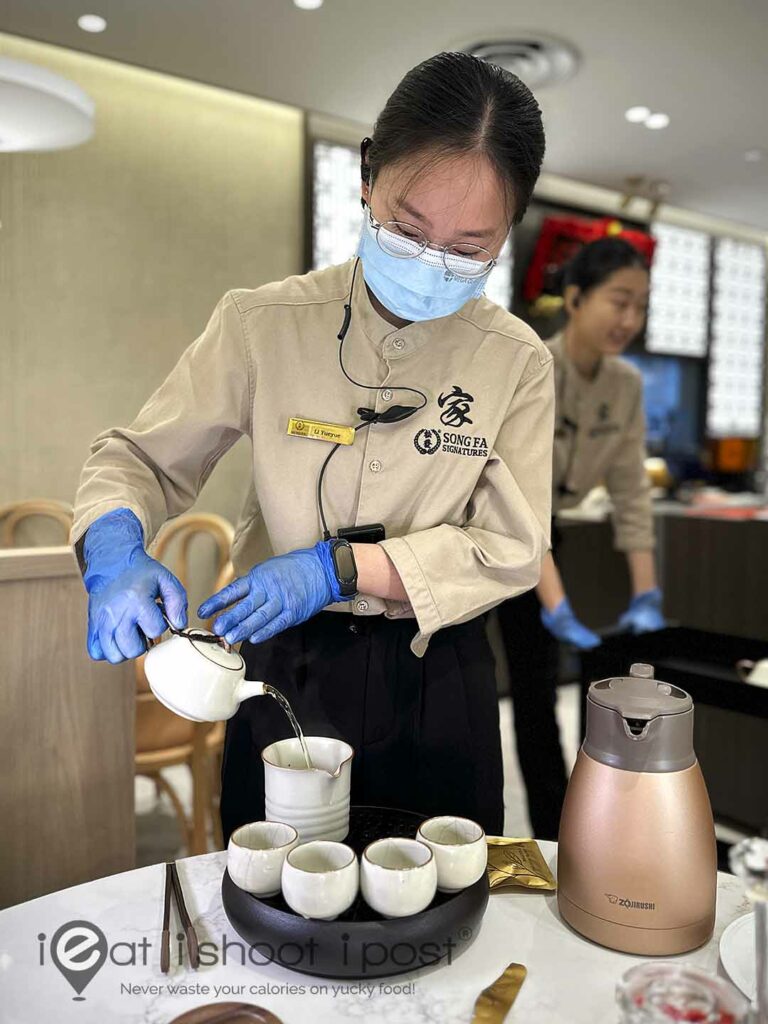
Teochew tea culture is renowned for its distinct practices, particularly the Gongfu tea ceremony. This ritual, which involves brewing tea in small Yixing clay teapots and serving it in tiny cups, emphasizes mindfulness and connection.
In Singapore, the relationship between this tea culture and Bak Kut Teh (pork bone soup) has evolved into a unique culinary ritual. The Gongfu tea ceremony is traditionally performed before the meal, adding a ceremonial touch that sets Singapore’s Bak Kut Teh culture apart.

Unfortunately, this practice is slowly being forgotten by the younger generation. It is therefore encouraging, to see that Song Fa has taken extra steps to promote and preserve our unique culture. So, be sure to order a pot of Gongfu tea to accompany your meal!
They offer a selection of teas, carefully chosen by Pek Sin Choon, to perfectly complement the dish. We particularly enjoyed the Roasted 8 Immortal blend ($8.80++), an Oolong tea from the Chaoshan region. Its woody and floral aroma pairs beautifully with the peppery Bak Kut Teh. After the meal, the White Dragon Pearl tea ($8.80++) is an ideal match for dessert.
Each tea is served in a small teapot, four cups and a hot water flask. The wait staff will perform the Gongfu tea ceremony right at your table for the first brew. They will advise that subsequent brews require less time and one pack is usually good for up to 3 brews.
Review of Dishes (Exclusive to Song Fa Signatures)
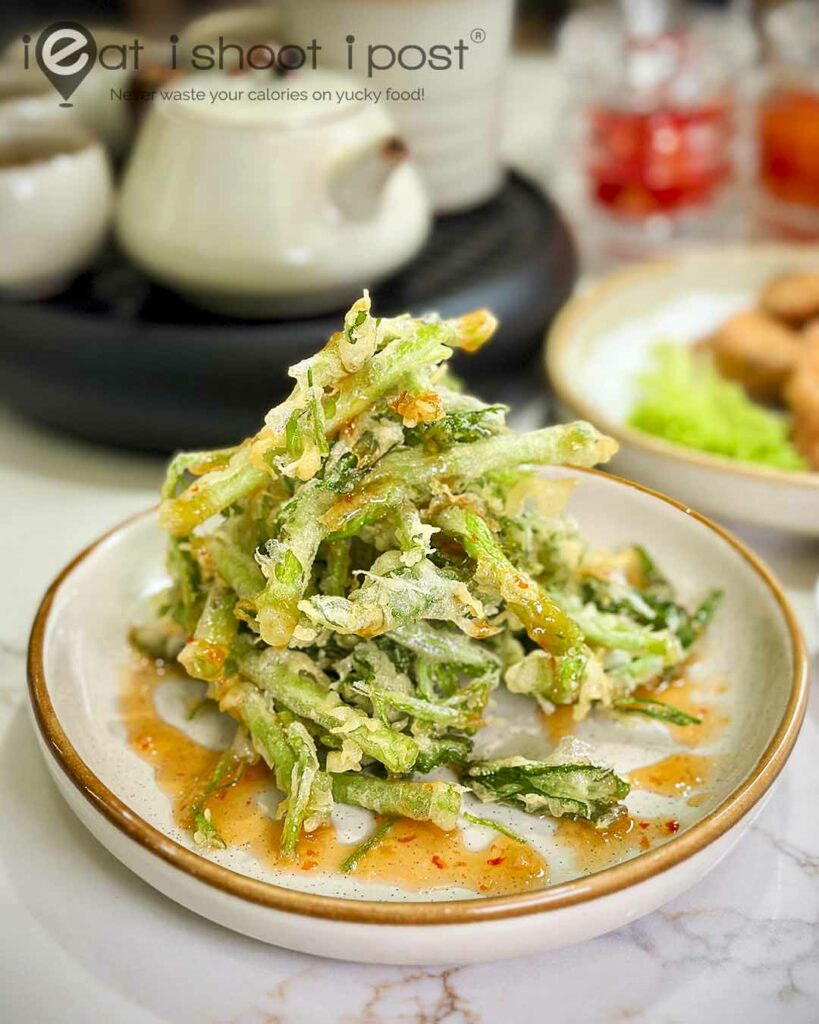
This is a delightful starter that even recalcitrant meat lovers will enjoy. The kangkong is lightly battered with tempura flour and fried until it’s light and crispy. It is then drizzled with sweet chili sauce. Honestly, it doesn’t matter what kind of vegetables you use—anything deep-fried like this is bound to taste good! 4.25/5
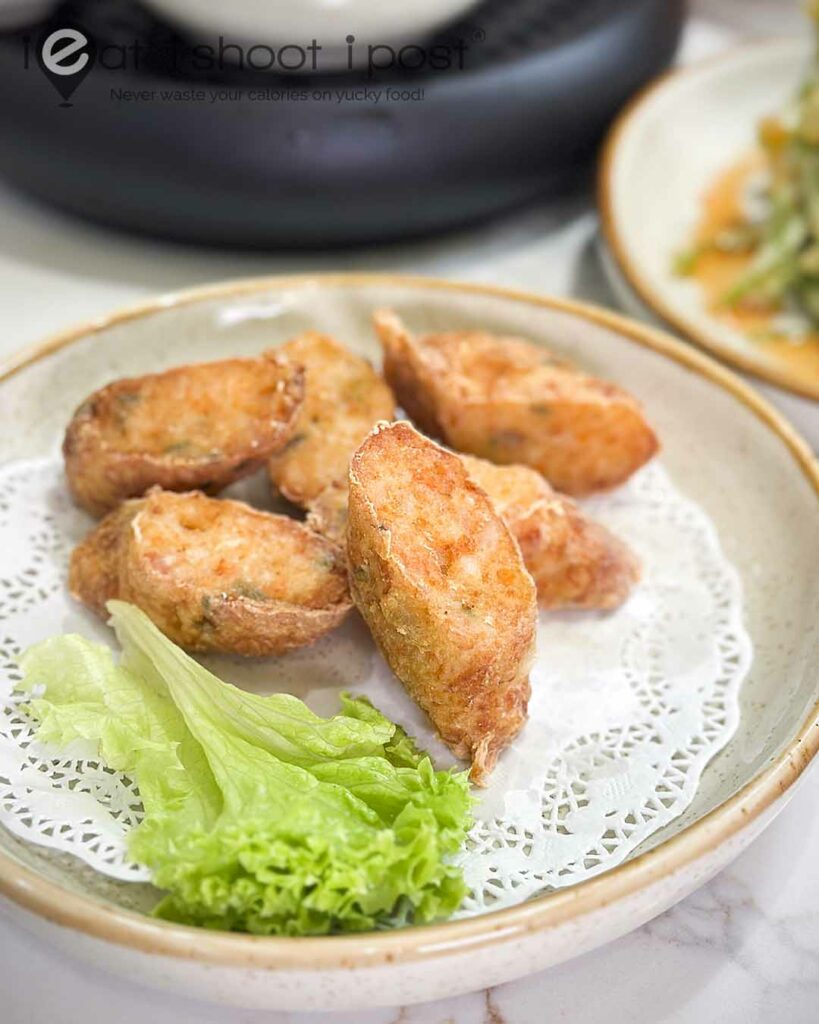
Hae Zhor (Prawn Roll) is a popular Zi Char dish but most of the time you can hardly taste the prawn in it. Fortunately the Teochew Crispy Prawn rolls here are filled with fresh prawn meat and tastes quite distinct from the run-of-the-mill “neighbourhood zi char” Hae Zhor. 4.25/5
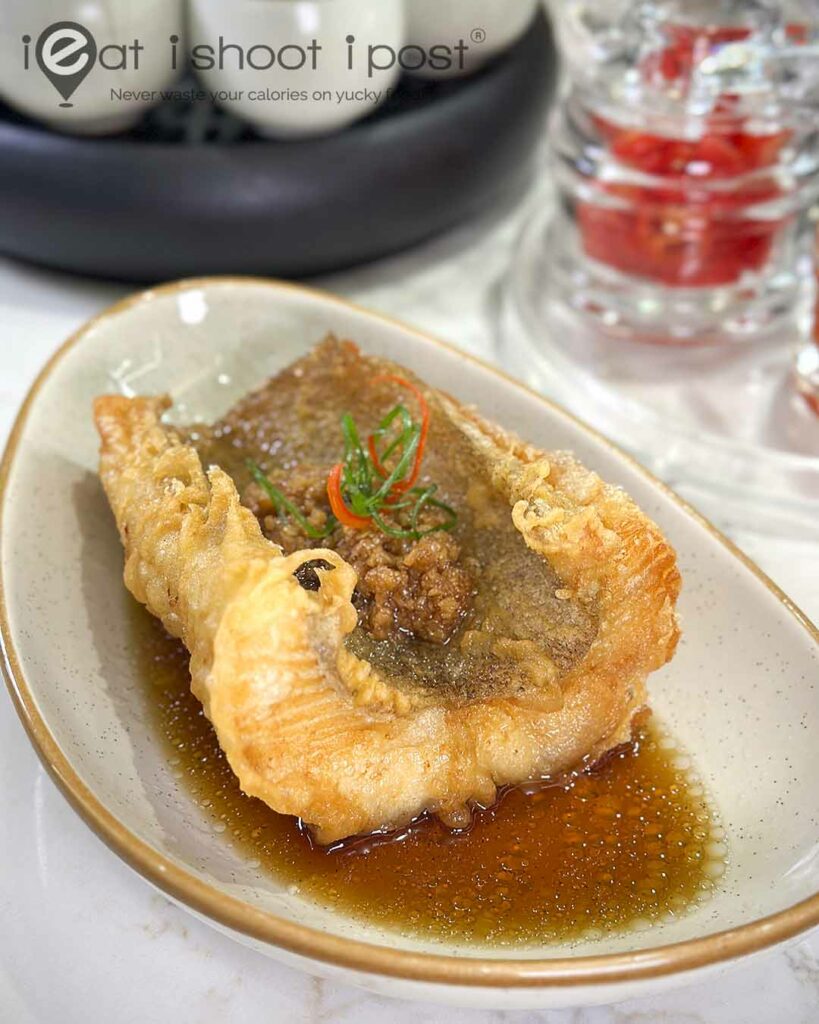
This is the first time we have come across deep fried flounder fish in a Chinese restaurant. And we quite enjoyed it! The flesh is flaky and slightly oily but not as oily as codfish, so it was perfect for deep frying. It is served with a very nice sauce and topped with fried garlic. 4.5/5
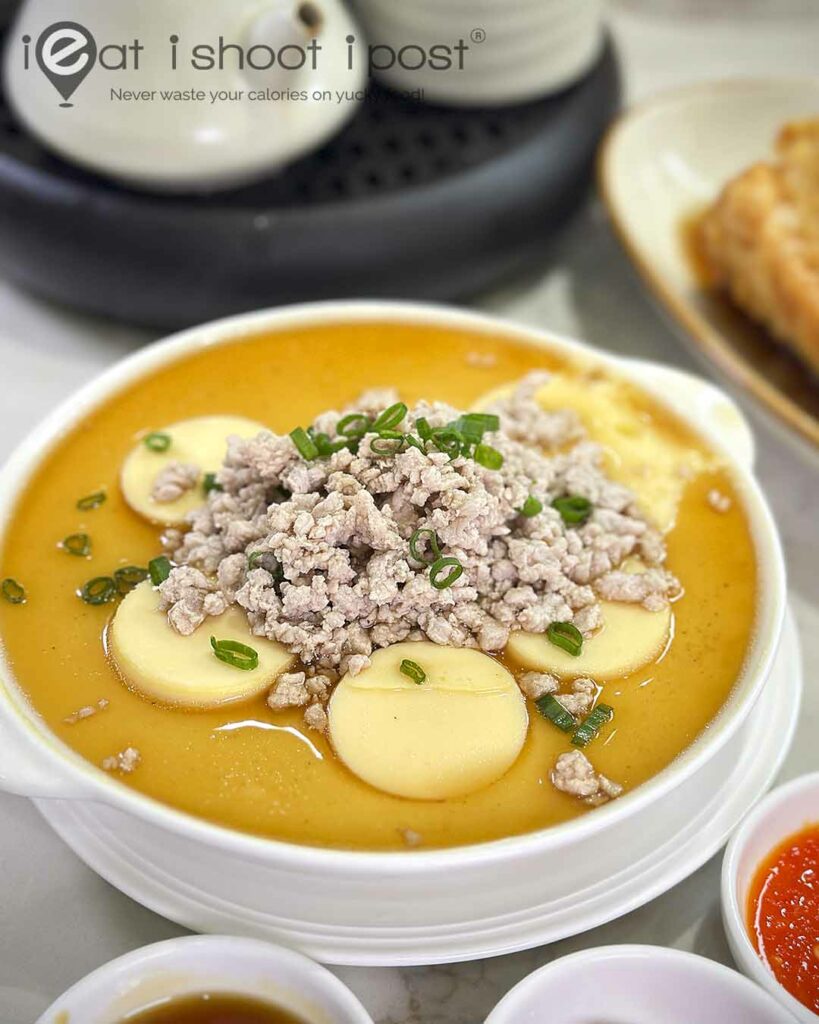
The steamed egg tofu is a family favourite that Grandma Yeo used to serve. It is said that she used to slice it into wedges resembling a pizza to the delight of the grandchildren! At Song Fa, they have recreated the “Pizza” look by using egg tofu set in egg custard and steamed. It is then topped with minced pork that is quickly blanched in the Bak Kut Teh soup for extra peppery flavour. 4/5
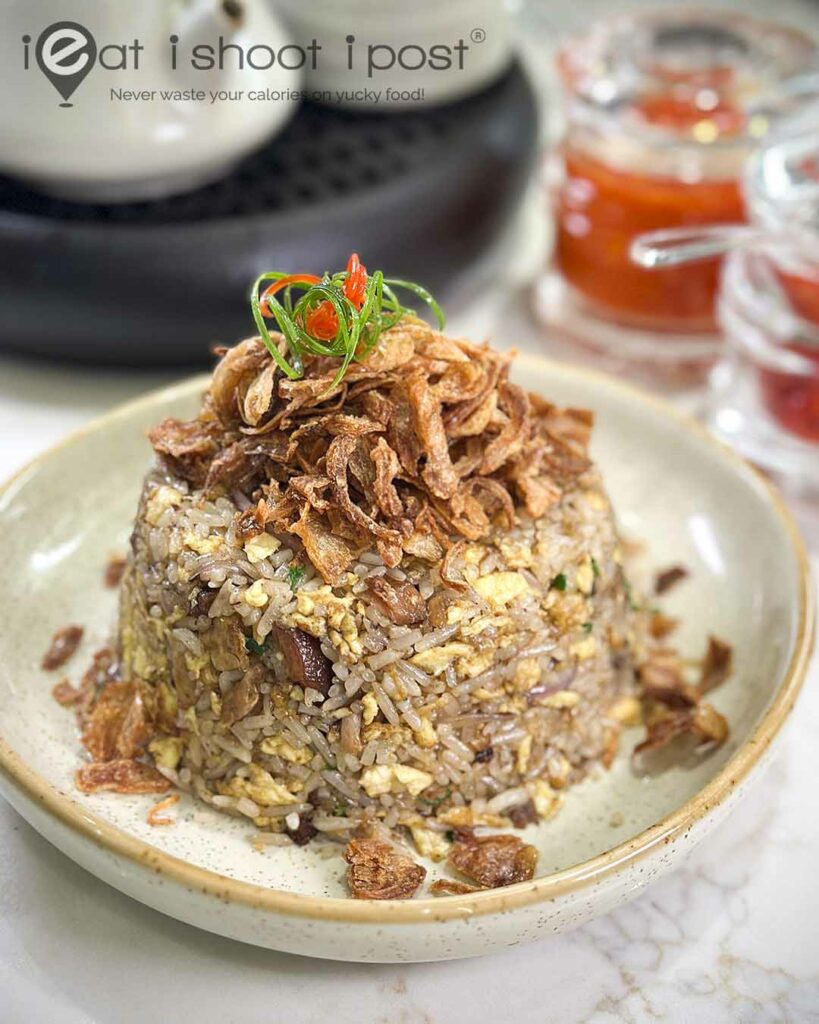
The idea for pig’s trotter fried rice came about from the practice of mixing left-over braised pork trotter in white rice, as a quick meal at the end of the day. I think it is an interesting idea. However, I just didn’t get enough pork trotter in the rice, to make it any more than just a very nice fried rice! 3.75/5
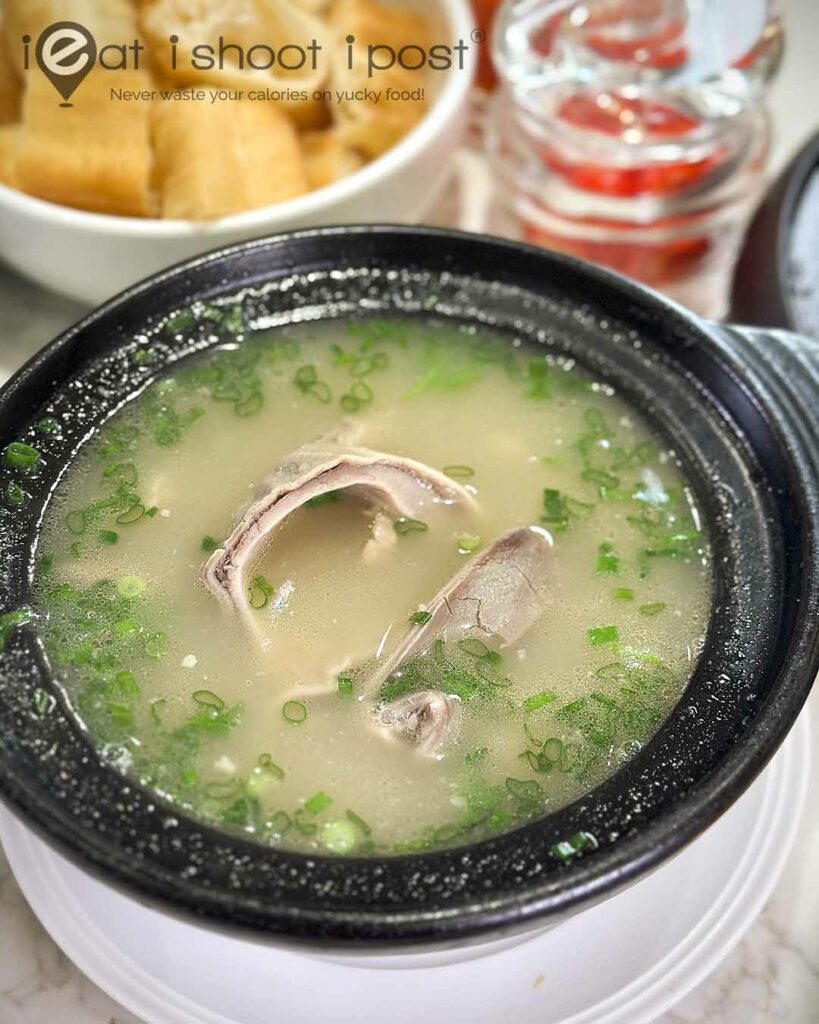
As far as pig’s stomach soup goes, the one here is excellent. It’s made with the same pork broth base as the Bak Kut Teh but with added chicken stock for extra depth. The result is a bold and peppery soup that should satisfy fans of pig’s stomach soup. While I’m not usually a fan of pig stomach, I found this soup pleasantly devoid of the strong, gamey flavor! 4.25/5
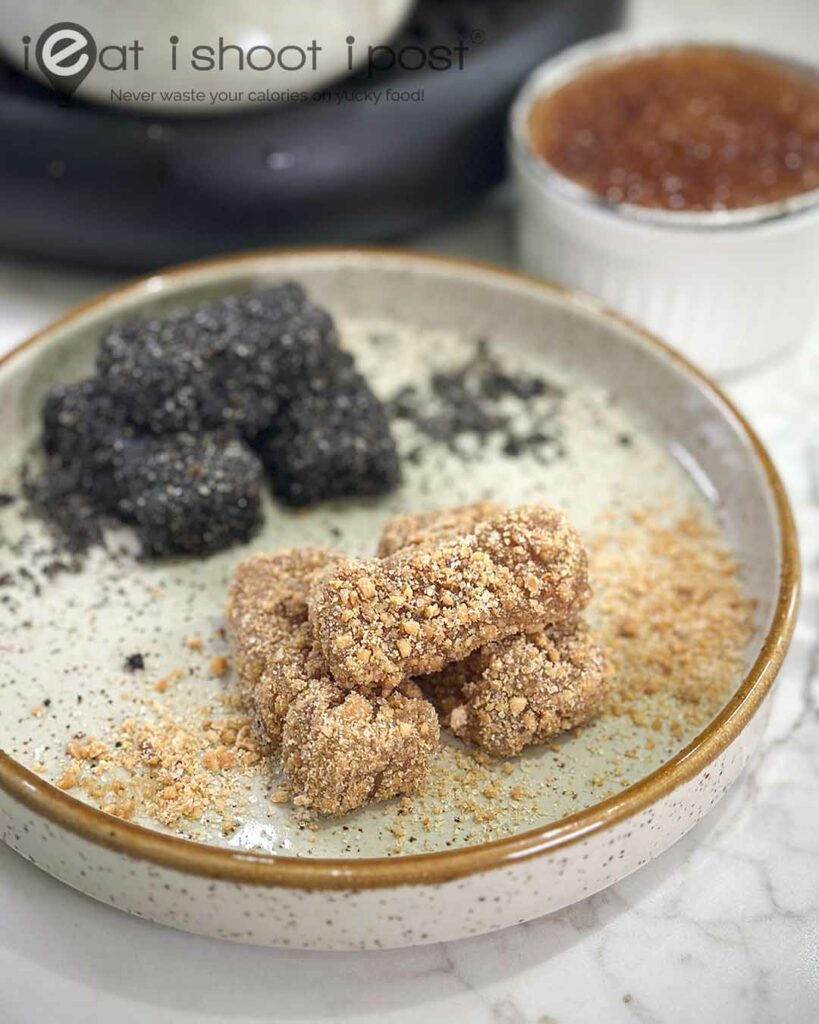
It’s a good idea to serve nian gao with ground peanuts/black sesame. The confectionery has a chewy texture like muah chee but a bit more firm. Nice sweet bites to end the meal. 4/5

It’s fair to say that Orh Nee is probably the most popular Teochew dessert. It’s a must-have on the menu of any Teochew restaurant. At Song Fa, they’ve modernized it by serving it in individual portions. You get a layer of egg custard at the bottom, followed by the yam paste, then a sprinkle of sugar that’s caramelized with a blow torch.
While I like Orh Nee, I still prefer the original pairing with pumpkin instead of custard. I think the overall presentation could also do with some refinement. 3.5/5
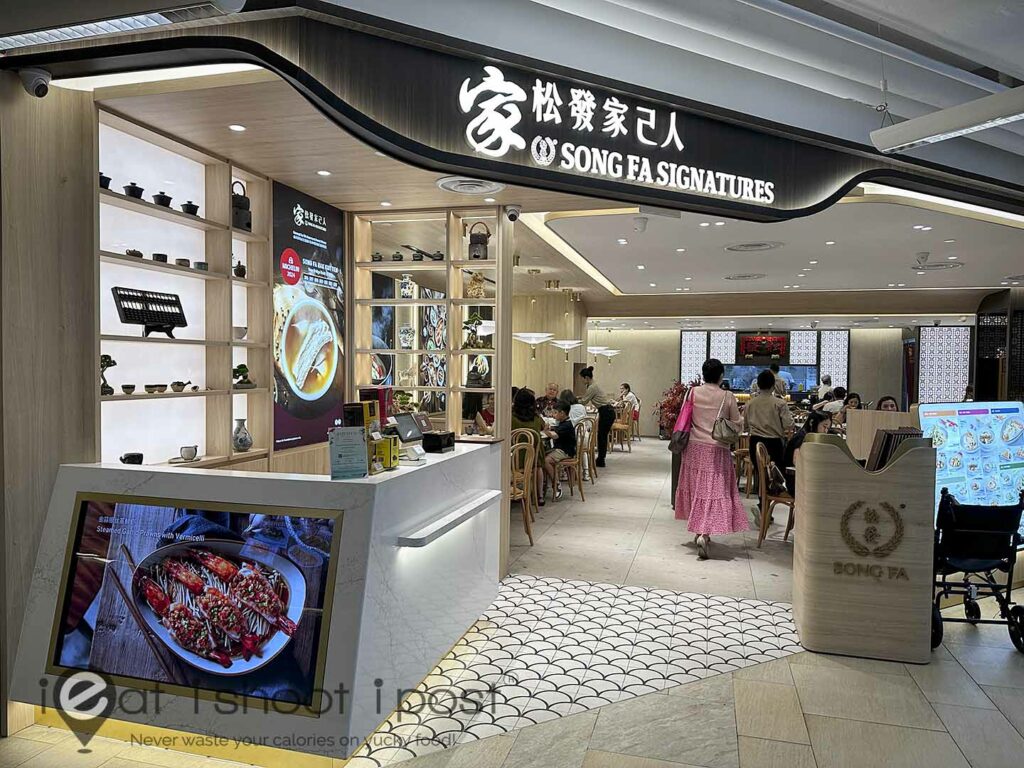
Conclusion
Song Fa Signatures is a welcome addition to the Singapore dining scene. It’s a step up from the standard Song Fa Bak Kut Teh, offering a wider selection of homely Teochew-style dishes. The option to order a pot of Gongfu tea to accompany your meal is a particularly delightful touch. It really highlights their commitment to preserve Teochew Bak Kut Teh culture!
Disclosure: this post is written in partnership with Song Fa. Opinions expressed are those of our own.

